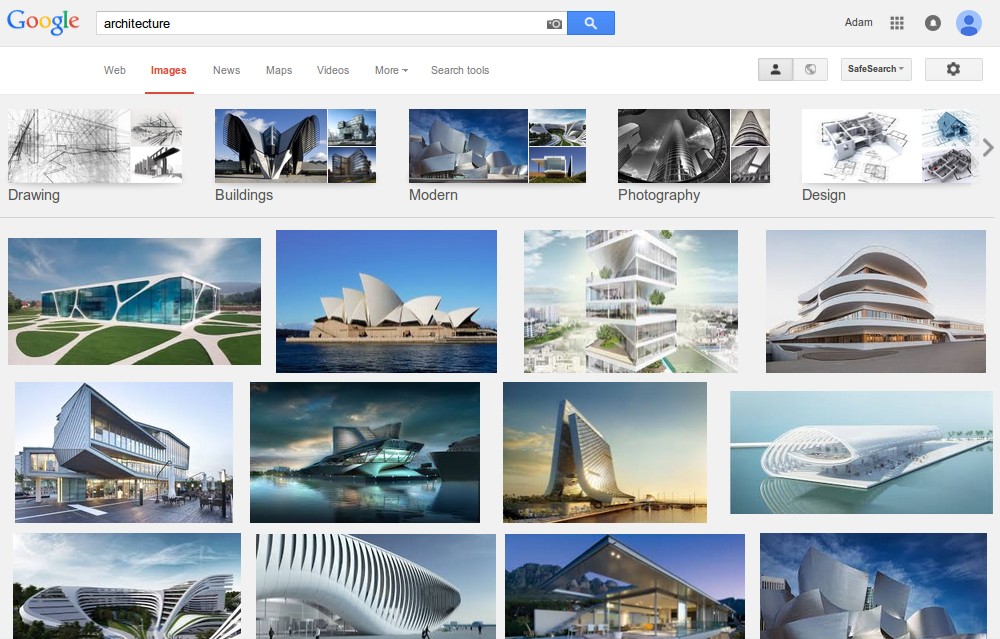In a poem by Craig Raine, A Martian Sends a Postcard Home, the alien narrator describes the strange goings-on of humans to friends and family back on Mars. The unlikely language used to describe this foreign world is an effective way to make the world strange again, a tool to look at things differently. Mist, for example, “is when the sky is tired of flight / and rests its soft machine on ground” and a car “is a room with the lock inside – / a key is turned to free the world // for movement”.
Which made me think – what if a Martian did a Google Image search for the word “architecture”? What would they understand architecture to be?

Our Martian might understand architecture in this way:
Architecture is white buildings with lots of zigs and zags, ribs and curves. Architecture doesn’t involve humans. Architecture is the exteriors of buildings. The sun always shines on architecture.
Interestingly, school architecture gets a pretty similar treatment.
If you dig beneath the surface of why this is happening, things get more interesting. Google results are recursive i.e. the algorithm returning your search results gives some weight to what other people performing earlier searches for the same terms seem to have been happy with. That is Google’s business model: being the most useful information provider where ‘most useful’ is partly determined by what previous users’ searching behaviour suggests was useful to them.
Google results and our selecting from the results offered are, in part, constructive of a social reality. This helps to explain why school comes out as this, why the results for shopping are as shocking as they are and why a search for human is fairly depressing in its ignorance of wide range of flavours humans come in.
Clearly Google Images doesn’t provide only visual descriptions of the world but what people want from certain kinds of descriptions of the world. And that poses a series of more interesting questions:
- why are people happy getting images of architecture that only show the outside of buildings when most of the time they’re on the inside?
- to what extent does the recursivity of searches and the subsequent social construction of descriptions of architecture feed forward into shaping how architectural design is borne out? That is, there appears to be desire for the kind of understandings of architecture ‘reported’ in the images above – does this contribute to shaping how we then see architecture? to how we think desirable buildings should look? to how we build?
- in terms of “standing out”, it’s likely that images of a wacky building more clearly convey an impression of architecture-ness. As a result, it’s perhaps easier to forget the architecturality of the everyday, of interiors, of people’s involvement with space, of architecture as a process rather than only, reductively a thing. Does our indirect promotion of new-and-wacky, white, people-less, zig zagging buildings lead inevitably to a downplaying of the value of context, of architecture as a process, a rejection of the importance of internal spaces?

1 Comment